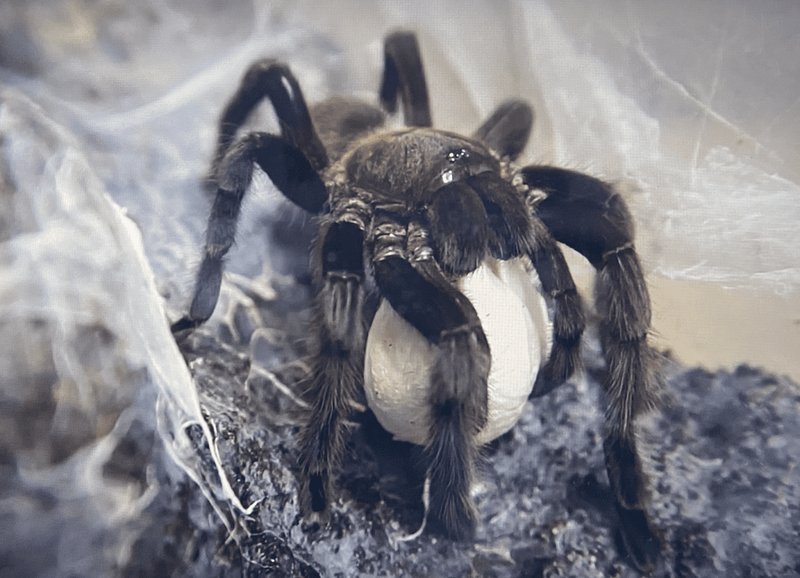
Let’s dig into the lifespan and growth of the Chilean Rose Tarantula. You might be wondering how long these eight-legged pals stick around, or perhaps what they need in terms of care to thrive. Understanding their life cycle not only deepens your appreciation for these creatures but also helps ensure you’re providing the best possible environment for them.
Overview of the Chilean Rose Tarantula
Chilean Rose Tarantulas, or *Grammostola rosea*, hail from the deserts of Chile and surrounding regions. With their striking pinkish-tan hues, they’re a favorite among both beginners and experienced arachnid enthusiasts. These spiders are relatively docile, making them easier to handle than many other tarantula species.
In the wild, they prefer a dry, warm habitat and can be found hiding under rocks or burrowing into the earth. Their natural behavior includes digging hideouts for safety, so creating a comfortable environment at home is crucial. The way they look and act can resemble little aliens from another planet, which is part of their charm!
What Is the Lifespan of a Chilean Rose Tarantula?
If you’re considering adopting a Chilean Rose Tarantula, it’s essential to know how long you might be sharing space with your new friend. Generally, these tarantulas can live quite long—in fact, they can live anywhere from 15 to 30 years with proper care. Isn’t that impressive? Many pet owners may not realize just how long these creatures can stick around.
Females typically have a longer lifespan than males. In many species of tarantula, males often die shortly after mating, while females can live for decades. It’s a bit of a sad “romantic” side, but it’s part of their life cycle. This means that if you’re planning to bring one home, you’re in it for the long haul!
Factors That Influence their Lifespan
Just like us, the lifespan of a Chilean Rose Tarantula can depend on several factors. Here are some of the key elements that can affect how long they live:
- Housing Conditions: Providing a clean, properly sized enclosure ensures that they feel safe and secure.
- Temperature: Keeping them at optimal temperatures (around 70°F to 80°F) promotes healthy growth and longevity.
- Diet: Feeding your tarantula a balanced diet of insects ensures they get the nutrition they need to thrive.
- Health Monitoring: Regularly checking for signs of illness can help you catch any problems early.
Taking the time to create a healthy environment for your tarantula not only helps them live longer but also makes for a better pet-owner experience.
The Growth Stages of a Chilean Rose Tarantula
Understanding the growth stages of a Chilean Rose Tarantula helps to appreciate how they develop from a tiny spiderling into a majestic adult. Their growth typically follows these stages:
1. Spiderling (0-1 year): When they hatch, they’re just a few millimeters long and can be quite delicate. During this time, they shed their exoskeletons several times as they grow.
2. Juvenile (1-3 years): As they grow, they become more robust and start displaying their beautiful coloration. This is when they start eating larger insects and require a spacious habitat.
3. Adult (3 years and older): Depending on whether it’s a male or female, they’ll reach their adult size, usually between 4-6 inches in leg span. This stage is where they can often live for decades, especially the females.
Each of these stages is fascinating in its own right. Watching a spiderling transform into an adult can feel like witnessing a mini-miracle.
Common Care Tips for Longevity
To help your Chilean Rose Tarantula live a long, happy life, consider these care tips:
– Enclosure: Choose a terrarium that’s spacious enough for them to move and explore. A simple setup with substrate for burrowing, hiding spots, and a water dish is perfect.
– Humidity: While they prefer dry conditions, maintaining a slight humidity level (around 50%) is beneficial. Light misting occasionally can help.
– Feeding: A diet primarily of crickets, roaches, and mealworms will keep your tarantula healthy and satisfied. You’ll want to feed them about once a week, depending on their age and size.
– Handling: While some owners enjoy handling their tarantulas, it’s best to limit this to avoid stress. Always be gentle, and it’s essential to learn how to handle them safely if you decide to do so.
Each of these steps plays a crucial role when it comes to keeping your tarantula thriving.
Health Issues and Signs to Watch For
Just like other pets, Chilean Rose Tarantulas can face health issues. Here are some signs to watch out for:
– Lethargy or Refusal to Eat: If your tarantula isn’t moving much or refuses food for an extended period, it might be a sign of stress or illness.
– Molt Problems: If they’re having trouble shedding their exoskeleton, it can lead to serious health issues. It’s essential to monitor this closely.
– Abnormal Behavior: Any significant changes in behavior, such as hiding more than usual or aggressive movements, can indicate problems.
If you notice any of these symptoms, it’s a good idea to consult with a knowledgeable veterinarian who specializes in exotic animals.
To wrap it all up, a Chilean Rose Tarantula can live a long and fascinating life, ranging from 15 to 30 years. By providing the right environment and care, you can ensure a healthy life for your eight-legged companion. As you embark on this journey, remember that their unique behaviors and life stages will enrich your understanding of the natural world.
So, if you’re ready to dive into the intriguing life of a Chilean Rose Tarantula, you’ll find it to be a rewarding experience. With the right knowledge and care, you’ll not only enjoy a pet but also become a part of their remarkable life story!

